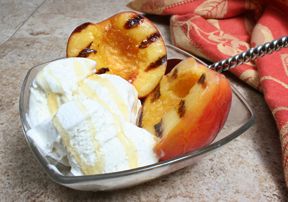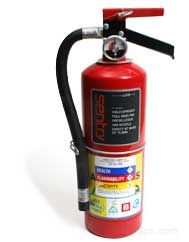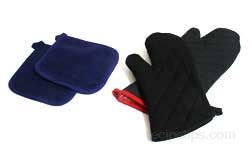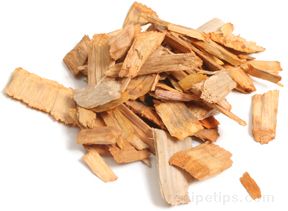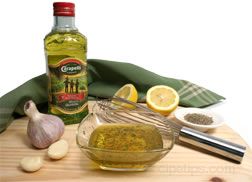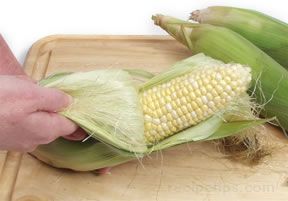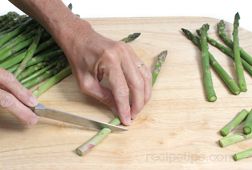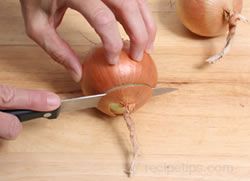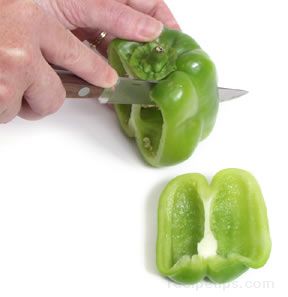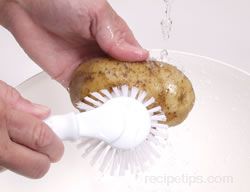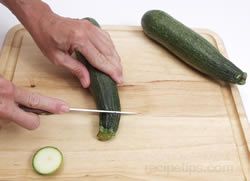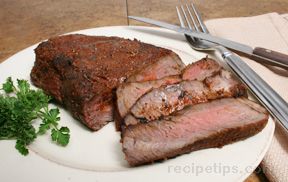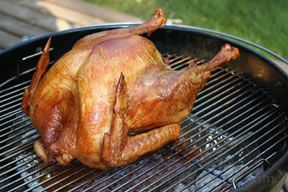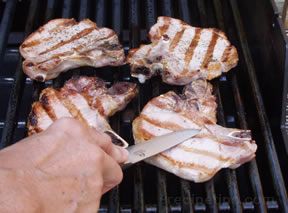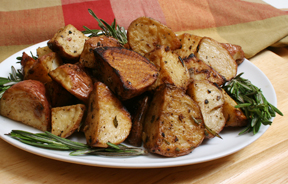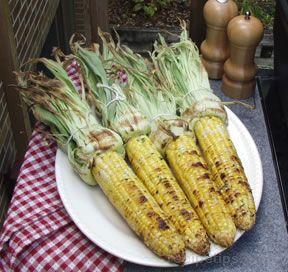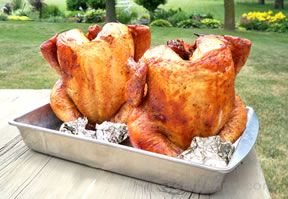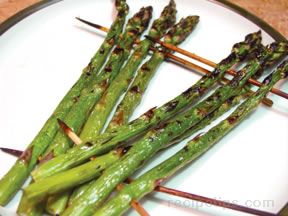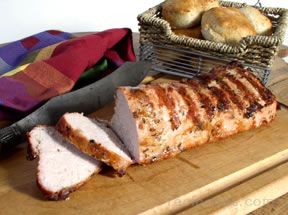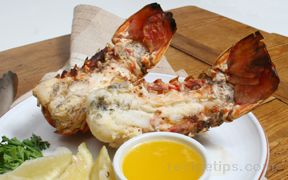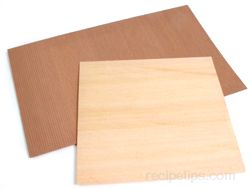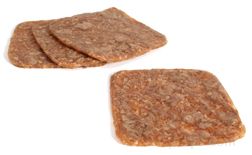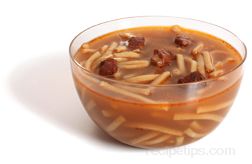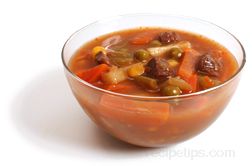|
| ||||||||||||||||||||||||||||||||||||||||||||||||||||||||||||||||||||||||||||||||||||||||||||||||||||||||||||||||||||||||||||||||||||||||||||||||||||
|
Beef can be grilled on several types of grilling units. Some grills are designed for outdoor use, while others are used indoors. |
|
Indoor grills provide convenience for consumers who are unable to grill outdoors due to location or climate. | |
|
The most popular indoor grills are electric countertop units. The portable grills come in a range of sizes and provide a grilled or broiled flavor to beefsteaks and small roasts. A grill rack, onto which the meat is placed, is positioned above an electric heating unit and a drip pan is positioned on the bottom of the unit to catch the extra fat and grease that drips from the meat as it cooks, helping to reduce the fat content of some meat cuts. Portable indoor electric grills are convenient to use and are easy to clean and most models are inexpensively priced. |
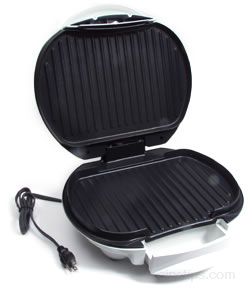 |
|
|
|
| Many of the manufacturers of kitchen stoves offer models with built-in grills. Like portable indoor grills, the built-in models are convenient to use and are a good substitute when grilling cannot be performed outdoors. | |
|
There are several popular methods for grilling beef outdoors, all of which provide a flavor to the meat that is difficult to match with indoor grilling. | |
|
|
|
| Traditional methods for grilling (which are still used) involve the use of a wood fire. A small wood fire is built within a ring constructed of heavy stones or metal or in a masonry structure designed to contain the fire. Before the beef is cooked, the fire is allowed to burn down until the flames are small and the embers are glowing. A grate, supported by the stone or metal structure, is placed above the fire and the food is cooked directly on the grate. One drawback with this grilling method is that it can be difficult to regulate the cooking temperature unless there is a method for raising and lowering the grate. | |
|
Beef is often cooked on grills that use charcoal as the fuel source. Charcoal grills are available in a wide range of styles and sizes. Some are very basic, consisting of a small cast iron container (that may be round, square, or oblong) for holding the charcoal with a grate placed on top (hibachi). Other models are elaborate kettle grills with covers, vents on top and bottom for regulation of oxygen to change the cooking temperature, built-in ash containers, and attached carts with a work surface and storage for utensils. |
 |
|
Among the most popular outdoor grills are gas grills, which, like charcoal grills, are available in many styles, sizes, and price ranges. They are easy to use and most people like the convenience that gas grills provide. Most models have automatic ignition and more than one burner, which are controlled with a knob to increase or decrease the fire, just like an indoor gas range. Depending on the manufacturer and the price, some gas grills may have warming trays, special smoker boxes to add a wood smoked flavor to food, built-in thermometers to monitor the cooking temperature when the cover is closed, and attached work surfaces that may be folded down when not in use. |
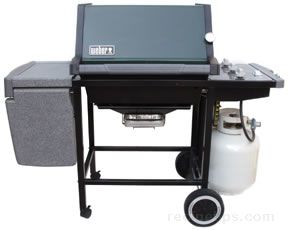 |
For information on the set up of outdoor grills, see Outdoor Grill Preparation. | |
Beef Preparation for Grilling
| Some beef cuts may require some preliminary preparation, such as boning, trimming, tying, or tenderizing, before they are grilled. |
|
Boning or extra trimming may be required for some beef cuts, which can be done while the grill preheats. The outer fat layer can be trimmed down to 1/8" to reduce the amount of fat. It is important to leave at least 1/8" of fat to help seal in the juices while the meat is cooking. |
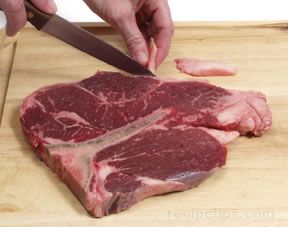 |
| When grilling steaks, better results are produced when the fat is slashed at 1-inch intervals around the perimeter of the steak. This helps to reduce the tendency of the steak to curl up during the grilling process. | 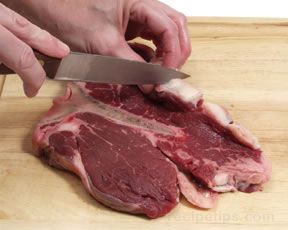 |
| Some beef roasts may require tying to maintain the shape during the grilling process and to allow the roast to cook as evenly as possible. Beef cuts that have been boned are often rolled and tied to create a uniform shape, which makes slicing much easier after the meat is grilled. | 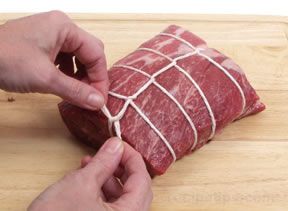 |
| Some beef cuts may require tenderizing, either by pounding, marinating, applying a rub, or barding. Beef can be tenderized while waiting for the grill to preheat, although when marinating beef, it may be best to allow additional time for the meat to soak in the marinade. |  |
Grilling
The grilling process cooks foods over a high heat source, either directly, indirectly, or a combination of both. Grilling temperatures typically reach as high as 650ºF, but any temperature above 300°F is suitable as a grilling temperature. The high heat of grilling sears the surface of beef, creating tender meat with a flavorful crust. The required cooking temperature and the method of grilling (direct, indirect, or a combination) depends on the cut of beef and the quality of the meat. As with any cooking method, beef that is grilled should not be overcooked in order to produce the best results. See the information below on grilling with direct heat and indirect heat. For information on the set up of outdoor grills, see Outdoor Grill Preparation.
Direct Heat Grilling
|
Cooking with direct heat is accomplished by placing cuts of beef on a grate directly over the heat source. For outdoor grilling, the grate can be positioned over an open fire or wood burning grilling unit, a charcoal grill, or a gas grill. |
| Direct Heat Grilling on Charcoal Grills | |
|
When beef is cooked with direct heat on a charcoal grill, the coals are usually spread in an even layer on the bottom of the grill. This provides a consistently hot, even temperature under the entire cooking surface. |
 |
| The cooking temperature typically reaches 450ºF to 650ºF when grilling over direct heat. Thin cuts of meat are quickly grilled over such high temperatures and should only be turned once to cook both sides. | 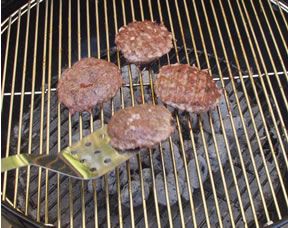 |
| Direct Heat Grilling on Gas Grills | |
| When grilling beef with direct heat on a gas grill, all of the burners are lit to provide a uniform temperature under the entire cooking surface (grate). | 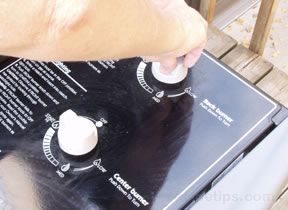 |
| The meat is cooked quickly over burners set to medium to high heat. Thin steaks, under ¾ inch thick, should be cooked over high heat for only 2 or 3 minutes per side and watched carefully to prevent overcooking. Thin cuts of beef are usually turned only once during the cooking process and are cooked with the hood down. | 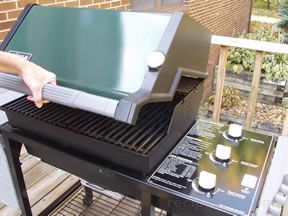 |
| When grilling steaks, use tongs or a spatula to turn the meat. A fork should not be used because it pierces the meat allowing juices to escape. Hamburger patties should be turned with a spatula. | 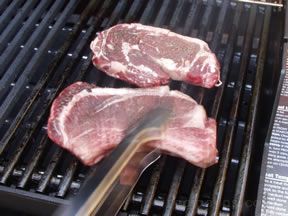 |
|
| |
Indirect Heat Grilling
|
The purpose of indirect heat cooking on a grill is to allow thicker cuts of beef to cook thoroughly while preventing the surface of the meat from burning. Indirect heat cooking is often done in conjunction with direct heat cooking. Large beef cuts are usually seared over direct heat and then the cooking process is finished using indirect heat to slowly cook the meat to the desired doneness. |
|
Indirect Heat Grilling on Charcoal Grills Once the preliminary steps are finished (grill setup, meat preparation, etc.), there are several easy steps to follow in order to cook beef with indirect heat on a charcoal grill. | |
| The coals can be pushed to one side of the grill and a pan is placed on the opposite side. The pan is used to catch fat as it melts and drips from the meat as it cooks, reducing flare-ups. | 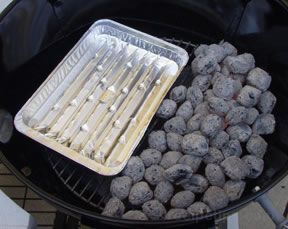 |
| Before actually cooking a thick cut of beef with indirect heat, such as the small chuck eye roast shown on the right, the meat is usually seared on all sides, using direct heat, in order to create a flavorful crust on the surface. The meat is seared directly over the coals that have been placed on one side of the grill. Use a tongs or spatula to turn the meat. Do not use any utensil that will pierce the meat, allowing juices to escape. |  |
| After the searing process is complete, the beef is placed on the opposite side of the grill, away from the coals and over the drip pan. The grill is covered and the beef is cooked to the appropriate doneness. |  |
| An alternative method for arranging coals for indirect heat grilling is to place half the coals on one side of the grill and the other half on the opposite side. Some charcoal grills are equipped with side baskets, which can be used for this purpose. A drip pan is placed between the coals under the location where the meat will be cooked. | 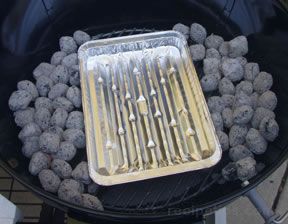 |
| A third method of arranging the coals is to bank them into a ring around the outer edges. Again, a drip pan is used under the meat. The grill should be covered while the beef cooks (which is true for any of the three methods of arranging coals). |  |
| Indirect Heat Grilling on Gas Grills | |
| A thick cut of beef, such as the boneless sirloin roast shown on the right, is seared on all sides over direct heat before it is cooked to the proper doneness using indirect heat. A tongs and/or spatula should be used to turn the roast. Using a meat fork will pierce the meat allowing juices to escape. | 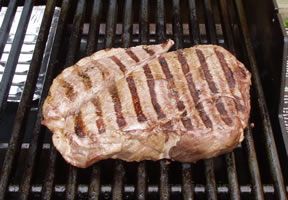 |
| All of the burners, except one, are turned off. For the grill pictured at right, the center and rear burners are turned off and the front burner remains lit (on high heat). | 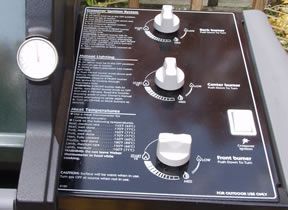 |
| A drip pan is placed on the opposite side away from the direct heat of the front gas burner and under the location where the meat will be cooked. | 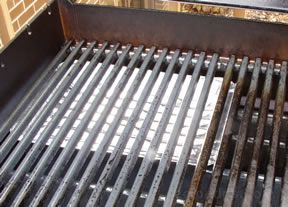 |
| The seared beef roast is placed on the area of the grate over the drip pan, away from the direct heat of the front burner. | 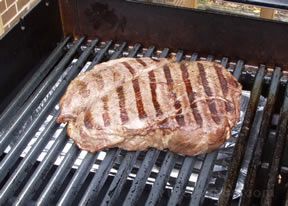 |
| The heat from the one burner is sufficient to cook the meat, indirectly, especially when the hood is closed to hold the heat within the grill. |  |
| Larger cuts of beef, such as roasts and ribs, benefit from cooking with indirect heat because the meat remains juicy and tender and the risk of overcooking the meat is reduced. | 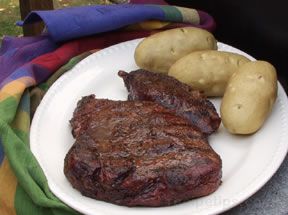 |
See the chart below for a quick reference for suggested grilling methods and approximate grilling times.
| Beef | |||
| Type of Beef | Grilling Method |
Grilling Time | Heat Level |
| Hamburgers | Direct | 2-5 minutes on each side (depending on thickness) | Sear hamburger with Direct heat and follow with Indirect if needed to prevent burning of outside. |
| Hot Dogs precooked |
Direct | 4-8 minutes (rotate as appropriate) |
If hot dogs have not been cooked, boil before grilling. |
| Kabobs 1-1½ inch cubed |
Direct | 10-15 minutes (rotate as appropriate) |
Grill 5-6 inches from Direct fire, or sear and continue with Indirect fire until done. |
| New York Strip | Indirect | 7-13 minutes | |
| Ribs | Indirect | 30-40 minutes | |
| Rib Eye | Indirect | 8-10 minutes | |
| Roast 3 lb. |
Indirect | 50-60 minutes | |
| Sirloin 3 lb. |
Indirect | 1-1½ hours | |
| Steak 2 inch |
Indirect | 15-20 minutes | |
| Steak ¾ inch |
Direct | 8-12 minutes (flip at 4 min.) |
Sear steak with Direct heat and follow with Indirect if needed to prevent burning of outside. |
For more information on Beef, see Meat - Beef.
Beef Doneness
Keep yourself, friends, and family safe from food borne illnesses by accurately checking the temperature of the grilled beef. Use an instant read thermometer inserted through the thickest part of the meat and away from any bones to get an accurate reading.
| Rare | Med/Rare | Medium | Med/Well | Well | |
| Beef | 140°F | 145°F | 160°F | 165°F | 170°F |
|
Hamburgers are safe when they have reached 160º F. | |||||
|
Beef Roast is safe at 145ºF, unless it is a "rolled roast" or mechanically tenderized. A temperature of 160º is recommended. | |||||
| Grilling Steaks |
|
Some people like their steak cooked to no more than rare (125ºF to 130ºF, using traditional guidelines), but this is not recommended. The internal temperature of the meat is not sufficient to kill harmful bacteria that may be present. |

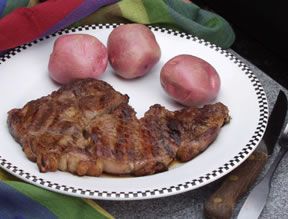




 Grilled beefsteaks are safe to eat if the center is still a bit pink. Harmful bacteria are killed if the internal temperature reaches 145ºF (
Grilled beefsteaks are safe to eat if the center is still a bit pink. Harmful bacteria are killed if the internal temperature reaches 145ºF (

